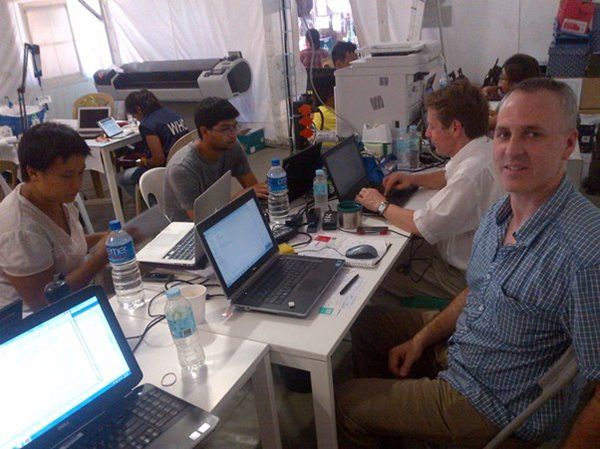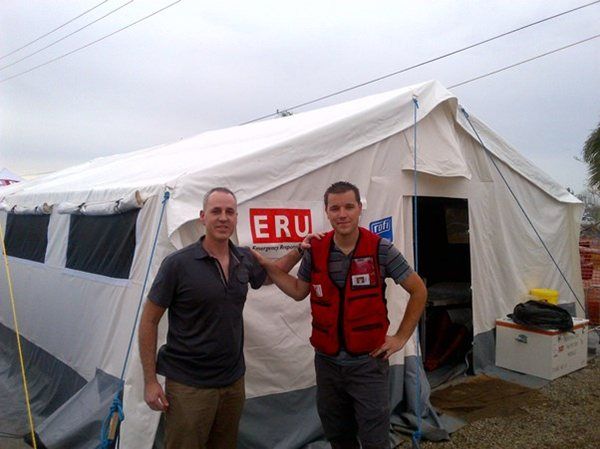Matt Hewett was among those who deployed to the Philippines in those early days of the emergency response after
Typhoon Haiyan caused significant damage in the country. He’s an Information Services Manager with the Canadian Red Cross, which at first glance may not sound like a typical career path for a humanitarian worker. However, information management is critical when it comes to coordinating a large-scale response and ensuring the right aid is delivered to those who need it the most.
After the typhoon struck, UN agencies such as OCHA and several humanitarian organizations including the Red Cross were quick to respond and send resources, specialized workers and supplies to the affected areas to support local efforts. This aid is coordinated through clusters that focus on specific areas such as health, water and sanitation, and emergency shelter.
Matt worked with the Emergency Shelter Cluster based in Tacloban, Philippines but he wasn’t out distributing tents and tarps. Instead, he was mostly at a computer, receiving information from various NGOs and government on all things related to sheltering. This data was coming at him at a furious pace by phone, email and text messages. Matt’s job was to compile and analyze this data using spreadsheets and databases, to produce reports, and to share information with GIS specialists to build maps to further assist aid agencies.

Matt Hewett worked in information management with the Emergency Shelter Cluster in the Philippines.
These efforts in information management helped determine needs and gaps in coverage based on assessments as well as keep track of activities from the various agencies involved in sheltering. While devices like tablets and smartphones are making it easier for humanitarian organizations to share information, simple tools like Excel spreadsheets are also part of the toolkit in disaster responses.
As Matt shared his experience after returning home from his deployment, the link between numbers on a spreadsheet and getting shelter materials into the hands of families without a roof over their heads became that much clearer. Humanitarian workers come from many different professional backgrounds and bring their unique perspective and expertise in disaster responses.

Matt also had an opportunity to visit other Canadian Red Cross delegates working at the ERU field hospital deployed in Ormoc, Philippines.
If you want to know more about on-going response of the Red Cross in the Philippines, visit
redcross.ca.